Time flies when you are having fun and my twenty-five years teaching tech at the higher education level has been quite an adventure. If you are new to teaching, have been in the classroom for a while, or simply love a little technology nostalgia, keep reading.
How I Began Teaching Tech
For the record, my teaching career was not planned.
As a matter of fact, my journey into teaching was as unplanned as they come. Picture this: a former Marine Officer, then, neck-deep in the world of software development and tech integration, finds himself wandering back to his old college campus one evening. There, after a nostalgic chat with my former computer science professor, he asks the question, “Would you consider teaching a night class for adult students?” Intrigued and always up for a challenge, I asked what it was. He said, “advanced Powerpoint”. I said, “there is such a thing?” Ultimately, I said yes.
That decision opened the door to over two decades in teaching a brand-new technology degree program that was right up my alley. Despite warnings from my family about the daunting task of teaching, the thrill of creating new courses and the buzz of sharing knowledge with eager minds was too enticing to pass up. I was ready for a change and teaching seemed like a nice temporary break from the full court press work of software development I was doing.
Creating a New Technology Degree

Getting hired to help build a new degree was definitely like venturing into uncharted territories. Oddly enough this was my third time going down a new life path in a short time. No…..wait…it was my fifth. Marine Officer, then software developer, and most importantly a new dad and husband. Now a new career in education.
This degree wasn’t being designed to be your standard, cookie-cutter technology degree program. Oh no, we were crafting something special, something that aligned perfectly with the real-world skills I had honed over the years. The aim? To equip our students with the ability to solve actual business problems through technology, a far cry from the traditional, theory-heavy assignments of yore.
It was a time of relentless learning and innovation, as the digital resources we take for granted today were scarce, and I found myself buried in tech books and exploring all sorts of technology.
Teaching a hefty load of five to six classes a week, my schedule was a whirlwind of lectures, labs, and late nights. Yet, it was the students, with their energy and curiosity, who fueled my passion and kept me going.
My Teaching Mindset

Stepping into the classroom and teaching tech for the first time, I felt a mix of excitement and nerves. Despite my experience in the military and teaching martial arts, this was a whole new ball game. My mission was to demystify technology for my students, to make it accessible and relevant to their lives.
I wanted to break away from the stale examples of what I experienced in the classroom and inject my lessons with real-world applications that resonated with them. This challenge to innovate and engage has been my companion ever since. It is what keeps me coming back and looking ahead.
What Teaching Tech Looked Like Twenty-Five Years Ago
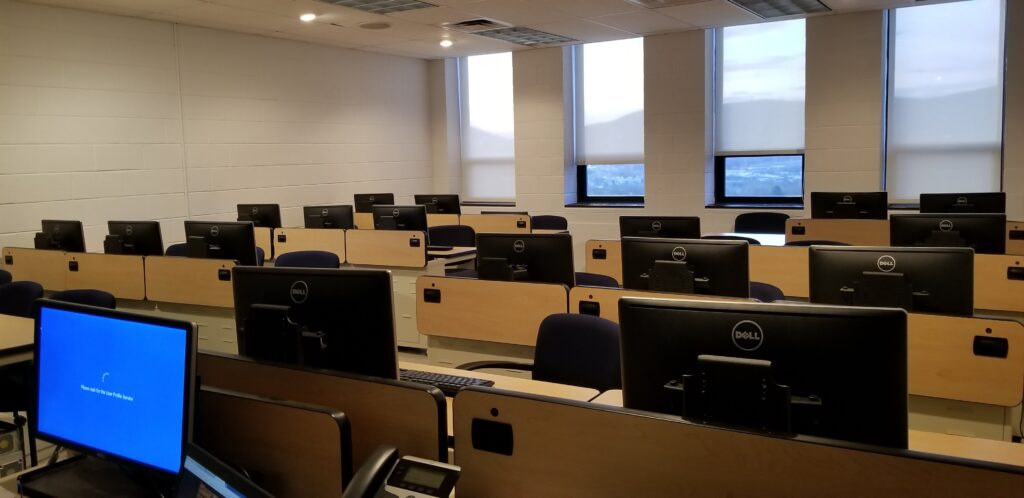
Stepping into today’s classrooms is like entering a new world compared to when I first started teaching. Back then, the concept of textbooks being supplemented by interactive websites was unheard of. My trusted ally in the classroom became Microsoft PowerPoint, a tool I used to share my notes and insights. I remember the time a fellow professor accused me of undermining the students’ note-taking abilities with my PowerPoint slides. My response was straightforward: my aim was to immerse them in technology, not to perfect their handwriting.
Back in those days, for those of us who knew our way around HTML, we pieced together our own course websites, uploading PowerPoint presentations and other resources to give students a richer learning experience. Yet, I couldn’t completely let go of the old ways. I handed out exams and quizzes on paper, and students submitted their code printouts, which I’d lug home to grade with a red pen in hand—a nod to my own educators.
Then came a game-changer: our introduction to Angel, our first Learning Management System (LMS). It revolutionized how we managed course materials, assignments, and quizzes, streamlining everything onto a series of generated webpages.
As technology inched forward, our campuses and classrooms began to wire up for internet access, though WiFi remained a dream of the future. The arrival of data projectors, which connected directly to computers, replaced the clunky overhead projectors of yesteryears. And when we needed them, speakers were installed to enrich media presentations, marking a significant leap in creating more dynamic and engaging classes.
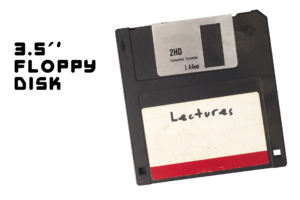 I used to carry a 3.5-inch floppy disk everywhere, safeguarding my PowerPoint lectures and sample code. Each term, I meticulously prepared a grading spreadsheet in Microsoft Excel, backing it up religiously. Back then, grades were reported on paper and physically submitted to the registrar, who would then process them and mail the results to students. Contrast that with today, where grades are submitted online and become available to students almost instantaneously—a testament to how far we’ve come in the digital age.
I used to carry a 3.5-inch floppy disk everywhere, safeguarding my PowerPoint lectures and sample code. Each term, I meticulously prepared a grading spreadsheet in Microsoft Excel, backing it up religiously. Back then, grades were reported on paper and physically submitted to the registrar, who would then process them and mail the results to students. Contrast that with today, where grades are submitted online and become available to students almost instantaneously—a testament to how far we’ve come in the digital age.
Grades
Over the years, the way we handle and share grades with students has evolved significantly, particularly with respect to privacy. Initially, it was common practice to list students’ names alongside their grades on sheets of paper and post these lists on our office doors.
This allowed anyone to see not just their own grades, but everyone else’s too. To address privacy concerns, we shifted from using full names to social security numbers, and then to abbreviated versions of those numbers, until eventually, the practice of publicly posting grades was discontinued altogether.

In terms of technology in our personal workspaces, we had the choice between a desktop computer in our office or what we now refer to as a laptop. Back then, without WiFi, we relied on ethernet cables to connect to the internet at our desks.
As someone fascinated by technology, I embraced a popular alternative, the Palm Pilot, a precursor to today’s smartphones, although it was quite rudimentary by current standards. Text messaging on a numeric keypad was a cumbersome process, viewed more as a novelty than a practical communication tool.
Now, WiFi blankets the campus, transforming virtually any location into a potential workspace or area for collaborative study. The Learning Management System (LMS) we use today is accessible via a smartphone app, which not only notifies users of new uploads but also offers messaging services, grade storage, and analytics. This system allows students to see how they stand in relation to the class average, bringing a new level of accessibility and insight into their academic performance.
Flash forward....my classroom today
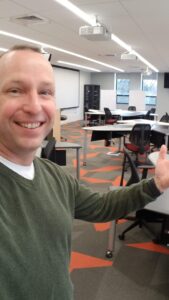
Today’s teaching tech environment in my lab is entirely student-centric. It’s outfitted with three data projectors mounted to the ceiling that cast information across various spots in the room, large high definition monitors are mounted on brackets, , portable white boards, and adjustable lighting is now available for my use facilitating a dynamic learning atmosphere.
The seating arrangement forms a star pattern, promoting collaboration among students, each of whom has access to a personal computer at their desk. The desks also provide connections so that external computing devices such as Raspberry Pi’s can make use of the built in desktop monitor and available keyboard. These computers are not only internet-ready but also connect to a secure server for various project work, ensuring a seamless blend of online and offline learning experiences. This is a far cry from what a classroom offered in 1999.
Adopting the flipped classroom model, I’ve reshaped how we approach learning. Instead of traditional lectures during class time, students are tasked with watching instructional videos or completing readings at home. This preparation allows them to dive directly into hands-on work and discussions during class, coming in with a readiness to engage deeply with the material.
Tools are always evolving. I have seen them go from early standalone installations of Microsoft Word and PowerPoint to Google’s cloud based office suite back to Microsoft and Office 365. They have become my trusted ally in the classroom because of software like Microsoft PowerPoint, a tool I used to share my notes and insights.
A.I. in Education

In my journey over the past 25 years of helping to shape young minds in the world of computing, one of the keepsakes I hold dear is this stack of computer punch cards.
These aren’t just any cards; they’re a legacy from my friend, mentor, and the great mind who welcomed me into the realm of teaching coding and technology. These punch cards are like a bridge from the past to the present, showing us just how far we’ve come in the tech world, and reminding us that this journey of evolution is far from over.
Back in the fall of 2022, the tech world was buzzing with the launch of OpenAI’s ChatGPT. Let me tell you, it was a moment that made many of us in education pause and take a deep breath. At first, I was very curious as I am with all new tech, then a bit worried about what it meant for our jobs and how we will prepare students, and then my curiosity piqued even higher. I spent the next summer diving headfirst into everything about AI chatbots, trying to get a grip on what makes them tick.
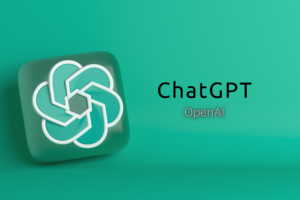 What I discovered was a game-changer: ChatGPT isn’t just another tech fad; it’s a tool, and like any tool, its value comes down to how we use it. Think of it like a calculator; without understanding the basics, it’s not much help. But, wield it with knowledge, and it opens up a world of possibilities.
What I discovered was a game-changer: ChatGPT isn’t just another tech fad; it’s a tool, and like any tool, its value comes down to how we use it. Think of it like a calculator; without understanding the basics, it’s not much help. But, wield it with knowledge, and it opens up a world of possibilities.
Now, I’m not saying we throw caution to the wind. Far from it. We’ve learned some hard lessons from the rapid adoption of cellphones and social media, and those lessons can help us navigate the AI landscape more wisely. It’s clear that AI is sprinting ahead, transforming a great deal at an unprecedented pace. We need to keep up, not just to stay relevant, but to ensure we’re harnessing its power to enrich our lives and the lives of our students.
Today, I’m using ChatGPT in ways I never imagined. It’s like having a co-teacher to help me refresh old assignments, adding a dash of my own flair and enthusiasm to create something even more engaging and challenging for my students. It’s also a fantastic assistant for crafting grading rubrics that I tweak to fit our needs perfectly.
In my coding classes, ChatGPT has become an invaluable resource. My students use it to craft code, but more importantly, they’re learning to reflect on their work and collaborate in ways that mirror the real-world’s team-based environment. It’s becoming clear that while coding skills are essential, the ability to work well with others and think critically might just be the most crucial skills of all.
There is an interesting timeline with technology and its impact on student skills. History is littered with technology appearing in education. At one time educators were concerned with the advent of the ink pen and expressed concern over how students need to make their own ink as a life skill.
I do think we will need to rethink a great deal and do it quickly but teachers will be needed. We have to still ensure core skills are taught first before they can even begin to engage these tools. It will take creative thought and courage to change our system.
Students Today
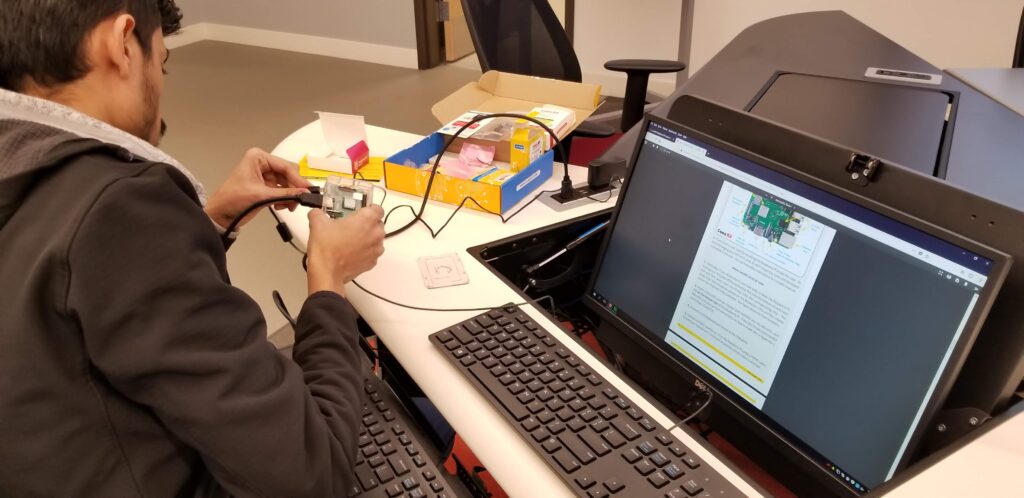
Throughout my observations of students, I’ve noticed that they arrive in our program from diverse backgrounds, each with their own unique set of skills. This diversity persists despite the pervasive role of technology in their everyday lives, which often leaves a gap in their understanding of how it all fits together. They might be great at smashing their fingers on a piece of glass (aka their smartphone) but their ability to tinker with the tech is why we need good educators.
A constant among students, however, is their desire to learn—although, admittedly, this doesn’t apply to everyone. Some may be present in body but not in spirit. Yet, the vast majority show a genuine eagerness to absorb new knowledge and skills, provided they have the right guidance to navigate through the learning process.
My approach to teaching has evolved into a philosophy centered around engagement, trust, rigor, and support. When I reflect on my educational values, two pivotal words spring to mind: persistence and pride. Nowadays, I find myself increasingly in the role of a coach and facilitator, encouraging students to tackle problems head-on and to persist in seeking solutions.
Once they succeed, I urge them to take pride in their achievements, recognizing the reflection of their personal commitment to excellence in their work. I believe that mindset begins at home but needs to be actively reinforced in the educational setting where we spend significant time shaping their attitudes and aptitudes.
One Last Thought and Then Turn to the Future

If you asked me as a college senior if I would see myself as a college professor, I would have looked at you like you were crazy. I was always a good student and enjoyed my teachers but I had goals that had a path far away from a classroom.
To survive and thrive as a teacher at any level in our education system, you need community. Like any profession, you will face all sorts of challenges and having fellow teachers and administrators you can turn to for support or provide it in return is what will allow you to improve as an educator and serve your students well.
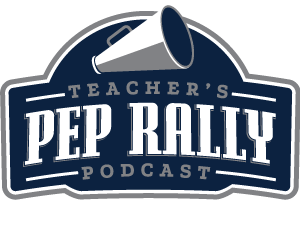 It was this realization that also had me collaborate with fellow teacher’s Erin King and Pete Bush. We launched the Teacher’s Pep Rally Podcast where we have amazing conversations with educators and those involved with education from all around the globe.
It was this realization that also had me collaborate with fellow teacher’s Erin King and Pete Bush. We launched the Teacher’s Pep Rally Podcast where we have amazing conversations with educators and those involved with education from all around the globe.
As I pause to reflect on the culmination of my first 25 years in education and gaze forward to what lies ahead, I feel profoundly grateful for the opportunity to contribute to others’ lives in the same way my teachers did for me. I was lucky to be mentored by several patient, knowledgeable, and inspiring educators who made learning an engaging, challenging, and enjoyable experience. As I move forward, I carry with me a piece of each of their teachings, hoping to inspire my students in the same way.
Here’s to another 25 years in teaching and helping others!
Thank you to all my students who kept me going!

Mr. Fred
Let Me Help You

If you are a teacher or someone looking to help others learn to code, let me help you.



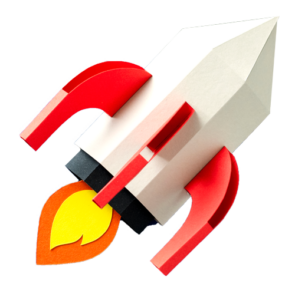
So cool Fred. Love it